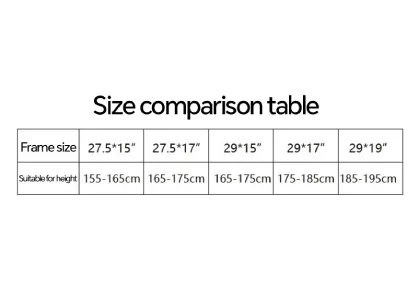
- Afrikaans
- Albanian
- Amharic
- Arabic
- Armenian
- Azerbaijani
- Basque
- Belarusian
- Bengali
- Bosnian
- Bulgarian
- Catalan
- Cebuano
- Corsican
- Croatian
- Czech
- Danish
- Dutch
- English
- Esperanto
- Estonian
- Finnish
- French
- Frisian
- Galician
- Georgian
- German
- Greek
- Gujarati
- Haitian Creole
- hausa
- hawaiian
- Hebrew
- Hindi
- Miao
- Hungarian
- Icelandic
- igbo
- Indonesian
- irish
- Italian
- Japanese
- Javanese
- Kannada
- kazakh
- Khmer
- Rwandese
- Korean
- Kurdish
- Kyrgyz
- Lao
- Latin
- Latvian
- Lithuanian
- Luxembourgish
- Macedonian
- Malgashi
- Malay
- Malayalam
- Maltese
- Maori
- Marathi
- Mongolian
- Myanmar
- Nepali
- Norwegian
- Norwegian
- Occitan
- Pashto
- Persian
- Polish
- Portuguese
- Punjabi
- Romanian
- Russian
- Samoan
- Scottish Gaelic
- Serbian
- Sesotho
- Shona
- Sindhi
- Sinhala
- Slovak
- Slovenian
- Somali
- Spanish
- Sundanese
- Swahili
- Swedish
- Tagalog
- Tajik
- Tamil
- Tatar
- Telugu
- Thai
- Turkish
- Turkmen
- Ukrainian
- Urdu
- Uighur
- Uzbek
- Vietnamese
- Welsh
- Bantu
- Yiddish
- Yoruba
- Zulu
Sep . 22, 2024 04:33 Back to list
how to adjust a mountain bike rear derailleur
How to Adjust a Mountain Bike Rear Derailleur
Adjusting the rear derailleur on your mountain bike is essential for ensuring smooth shifting and optimal performance. Whether you’re experiencing skipping gears, chain rubbing, or poor shifting response, proper adjustment can get your drivetrain functioning correctly again. Here’s a step-by-step guide on how to adjust your mountain bike's rear derailleur effectively.
Tools Needed
Before you begin, gather the necessary tools a 5mm Allen wrench, a screwdriver (flathead or Phillips, depending on your derailleur), and possibly a chain checker to assess wear.
Step 1 Inspect the Derailleur
Start by checking the rear derailleur for any visible damage or alignment issues. Look for bent hangers, which can cause shifting problems. Ensure that the derailleur moves freely without obstruction from the chain or frame. If the derailleur is damaged, it may need to be replaced.
Step 2 Set the Limit Screws
The limit screws on the derailleur control how far the derailleur can move, preventing the chain from falling off the cassette or into the spokes. There are typically two screws one for the high gear (smallest sprocket) and one for the low gear (largest sprocket).
1. High Gear Limit Shift to the smallest chainring and the smallest rear sprocket. Adjust the high limit screw (marked as H) to ensure that the derailleur is just clear of the smallest sprocket. It should not allow the chain to go beyond this point. 2. Low Gear Limit Now, shift to the largest chainring and the largest rear sprocket. Adjust the low limit screw (marked as L) so that the derailleur is just shy of the largest sprocket, preventing the chain from shifting into the spokes.
how to adjust a mountain bike rear derailleur

Step 3 Adjust Cable Tension
With the limit screws set, it's time to adjust the cable tension. If shifting is slow, increase the tension by turning the barrel adjuster counterclockwise. Conversely, if the chain struggles to shift to higher gears, decrease the tension by turning it clockwise. Test the shifting after each adjustment to see if it improves.
Step 4 Fine-Tuning
After adjusting cable tension, it's essential to fine-tune the derailleur's position. Shift through all gears to ensure smooth transitions between sprockets. Look for any chain rub on the derailleur as you shift. If there's excessive noise or rubbing, make minor adjustments to the cable tension or limit screws as necessary.
Step 5 Test Ride
Finally, take your bike for a test ride. Shift through all the gears under load and pay attention to any issues. This real-world application can help you determine if further adjustments are needed.
Conclusion
By following these steps, you can effectively adjust your mountain bike rear derailleur, ensuring a smoother and more enjoyable riding experience. Regular maintenance and adjustment will prolong the life of your bike's drivetrain and enhance your performance on the trails. Happy riding!
-
The Ultimate Kids' Four-Wheeler Experience
NewsJul.09,2025
-
The Ultimate Guide to Mountain Bikes: Gear Up for Your Ride
NewsJul.09,2025
-
The New Age of Cycling: Electric Bikes for Every Rider
NewsJul.09,2025
-
The Best Kids Bicycles: Ride in Style and Safety
NewsJul.09,2025
-
The Best 3-Wheel Scooters for Kids: Fun, Safety, and Adventure
NewsJul.09,2025
-
Revolutionize Your Ride: Affordable Electric Bikes
NewsJul.09,2025
-
Finding the Perfect Mountain Bike for Every Rider
NewsJul.09,2025



